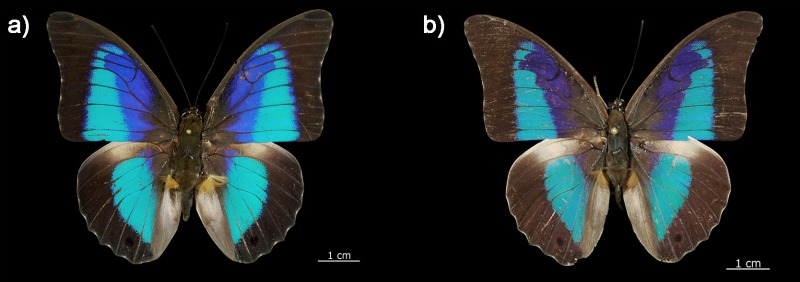
New Butterfly Species ID'ed by DNA

New research into the particulars of butterfly DNA has unmasked as many as nine new butterfly species previously lumped together with known butterfly species.
The interloping butterflies, all found in Mexico's Yucatan Peninsula, have long remained incognito in the collection of El Colegio de la Frontera Sur-Chetumal (ECOSUR), a research center in Mexico. They are known as "cryptic species," because, although their markings and body types are nearly identical to previously identified butterfly species, their genes tell a different story.
"We expect all nine cryptic species will be new to science," said lead scientist Carmen Pozo, in an email.
The ECOSUR team used a technique known as DNA barcoding for their research, which is published online in the journal PLoS ONE.
By looking at the same stretch of DNA in 857 butterfly specimens in the institution's collection, the technique allowed the researchers to root out genetic differences large enough to set one species apart from another and compare the genetic sequences with a large database of known species.
In addition to identifying nine butterfly species that are likely new to science, the genetic study allowed scientists to sort 71 caterpillar specimens into 16 different species and match them with their adult counterparts — a difficult task when relying on appearance alone, since there's notoriously little resemblance between a caterpillar and its more elegant, fully grown form.
Pozo also said that following the life cycle of each species in the field is time-consuming and expensive. "Barcoding helps link the adults with caterpillars of each species in an easy, quick, cheap and accurate way," she told OurAmazingPlanet.
Get the world’s most fascinating discoveries delivered straight to your inbox.
The researchers noted that having the ability to quickly identify which caterpillar turns into which butterfly could aid conservation efforts for threatened species and allow crucial caterpillar habitat to be identified and conserved.
The researchers also found four butterfly specimens in the collection that were incorrectly labeled as one species when, in fact, their DNA revealed they belonged to a different species altogether. Two of the newly-labeled butterflies represent new records for both the region and the country as a whole.
One of the specimens, Adelpha iphiclus, belongs to a species that has never before been seen in the Yucatan Peninsula. Another, Taygetis lache, has never before been found in all of Mexico.
All of the specimens studied belong to more than 100 different species in the Nymphalidae family, which encompasses about one-third of the 160,000 known butterfly and moth species worldwide.
The scientists noted that the revelation of the mislabeled species and the nine entirely new butterfly species adds to the evidence that many butterfly species around the world await discovery.
"This is exciting, because we are discovering new species in a well-known butterfly family," Pozo said, "which means we have more biodiversity than we thought." And yet, she said, the excitement that comes with new discovery is tempered by the fact that habitat loss is threatening several of the species.
This story was provided by OurAmazingPlanet, a sister site to LivScience. Follow OurAmazingPlanet for the latest in Earth science and exploration news on Twitter @OAPlanet and on Facebook.

